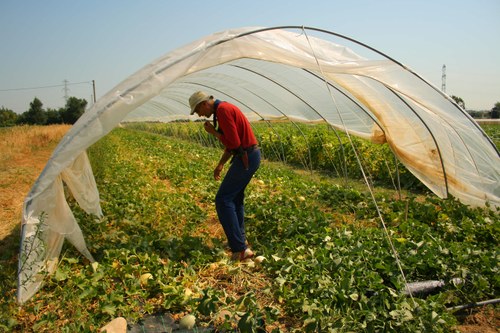Case study of social innovations: peri-urban community supported agriculture (CSA).

Location: Bologna, Italy
Typology: Community-supported agriculture (CSA) farm
Urban area: Peri-urban
Innovation type: Social innovation
Main functions: Cooperative – Social cohesion – Ecological production – Community empowerment – Volunteering
Arvaia is a social cooperative founded in 2013 to manage a piece of peri-urban agricultural land as a community in order to obtain local (km.0) and ecological food through cooperative work among citizens. The land is a concession of the community of Bologna and now is an area restricted for urban development. Nowadays Arvaia is made of 324 members and cultivates 75 different variaties in 47ha in the outskirts of Bologna.
The approach is collaborative and dedicated to sharing the common good land to farm. Members has a single annual fee that covers the annual budget and will give right to reception of the products weekly. Members are invited to participate in the agricultural activities because of some half-day year. Cooperation to the farm is based on their skills or professional ability (accountant, community manager, etc.). Pursuing the “zero waste” goal, the surplus of production will be transformed and redistributed. Memebers can pick up their weekly harvest directly at arvaia or in some points of the city centre.
Crops: 75 varieties of diverse products (tomato, melon, watermelon, zucchini, lettuce, eggplant, wheat, etc.) [+ info]
Techniques: Soil production – Rotation for promoting organic matter content – Protected cultivation for certain crops (tunnel)
Irrigation: Use of tap water – Drip irrigation
Use of renewable resources: –
Sustainable practices: Ecological production – Seasonal production – Production km.0 – Minimization of food waste – Biologic seeds (own production)
Other products: Beekeeping – Added-value products (e.g. tomato sauce)
Sanyé-Mengual, E., Specht, K., Grapsa, E., Orsini, F., & Gianquinto, G. (2019). How Can Innovation in Urban Agriculture Contribute to Sustainability? A Characterization and Evaluation Study from Five Western European Cities. Sustainability, 11(15), 4221.